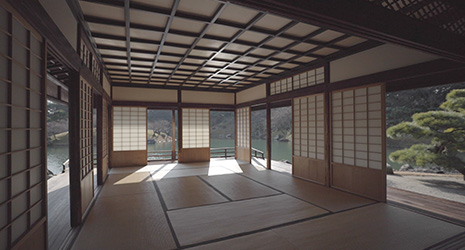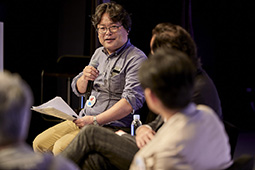Home > Highlighting JAPAN > Highlighting Japan September 2019 > Celebrating Diversity in Culture
Highlighting JAPAN


Japan Through the Window
Beginning in Spring 2020, a series of exhibitions will be held at Japan House locations in Brazil, the United States and the United Kingdom, themed around the beauty of Japan as seen through windows.
Japan House is a network of overseas hubs established in 2017 by the Ministry of Foreign Affairs of Japan to provide people around the world with opportunities to encounter and appreciate Japan as a country that enriches the rest of the world. So far, the Japan House Touring Exhibition Project has held a variety of themed exhibitions rotating around its three existing hubs in the cities of São Paulo, Los Angeles and London. One exhibition that has been selected for the third year of the project is “Japan Through the Window” (working title) produced by the Window Research Institute. The exhibition will aim to communicate the beauty of Japan as seen through windows and architecture, while at the same time considering windows from the perspective of their universality in civilization and their diversity as cultural objects; and will travel around the three Japan House locations over a period of around one year beginning in Spring 2020.
“We regard windows not only as a part of architecture, but as being related intimately to people’s lives and physical actions; and have taken the approach of deciphering the significance of windows from various different perspectives. This Japan House touring exhibition will provide an excellent opportunity to introduce windowology research originated in Japan,” says the Institute’s director, Kinuko Yamamoto.
The exhibition will be produced under the academic direction of architectural critic Taro Igarashi, who has overseen windowology since its establishment in 2007. “Through our activities in window research over the last decade or so we have accumulated various achievements, enabled by the participation of universities and other research institutions both in Japan and overseas, as well as various experts and artists. We have selected some of those achievements that will enable us to communicate how windows are used in Japanese architecture, and are currently working to prepare for the exhibition,” explains Igarashi.
In Japanese architecture, which makes extensive use of pillars and beams in constructing structures, it is possible to make all of the spaces between these structural parts of the framework into openings. This makes the concept of window structures in Japanese architecture fundamentally different from that of other architectural styles in which the walls of a structure are built, for example, by laying stones or bricks.
In traditional Japanese houses, the external appearance and character of the building changes dramatically when fittings such as amado (window shutters) and fusuma (sliding doors) are thrown wide open. The exhibition will aim to demonstrate concepts such as this, and the functional beauty of fittings that are used in Japan on a daily basis, with video footage using the Kikugetsutei—a teahouse in Ritsurin Garden, Takamatsu City, Kagawa Prefecture—as a prime example. The exhibition will also present efforts to examine how the general population of Japan have lived their lives in houses such as these, by drawing hints from the popular national animated comics Sazae-san.
The exhibition will also display a dimensionally accurate model teahouse built using the traditional Japanese okoshi-ezu technique of creating three-dimension fold-up design drawings.
“Teahouses are quite peculiar buildings in Japanese architecture. If we look at the Yosuitei teahouse in Kyoto, for example, it has thirteen windows, despite being such a small building. There are no similar architectural examples anywhere in the world,” says Igarashi. The teahouse—with its elaborately designed and thoughtfully positioned windows—allows us to appreciate the unique sensibilities of the Japanese with regard to nature, of bringing the “outside” scenery “inside” with the passage of time.
In another project, titled “Window Workology,” the exhibition examines the roles of windows specialized towards various areas of manufacturing, from weaving and dyeing to pottery, and the processing of food products such as salt and tea. It also introduces the handiwork and history of Japanese craftspeople and items of local specialty produce that are deeply rooted in the climate and natural features of various regions of Japan.
“During the exhibition period, we also plan to hold talk-based events that visitors can participate in. Through the exhibition, we hope that windows—which are familiar everyday objects—will become a motivator in creating rich cultural exchanges,” says Yamamoto.
© 2009 Cabinet Office, Government of Japan







